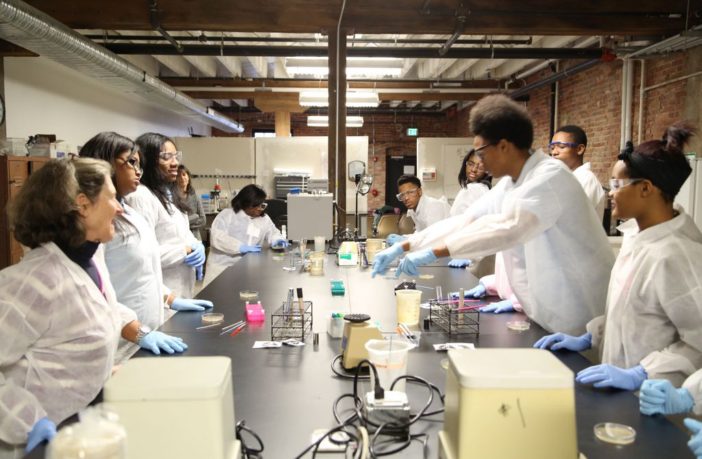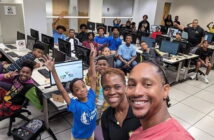
From a young age, Baltimore City Public Schools intentionally immerses students into science, technology, engineering and mathematics (STEM) courses and enrichment programs. (Courtesy of Baltimore City Public Schools)
By Megan Sayles
AFRO Business Writer
Report for America Corps Member
msayles@afro.com
According to the U.S. Bureau of Labor Statistics, science, technology, engineering and mathematics (STEM) jobs are expected to grow over two times faster than the total for all occupations during the next decade. This statistic provides promise for students who are interested in these subjects, but they must first be presented with opportunity.
Black workers comprise 9% of the STEM industry compared to 67% for White workers, according to the Pew Research Center. Further, Black students obtained 7% of all STEM bachelor’s degrees during the 2017 to 2018 school year while their White counterparts obtained 62%.
As W.E.B. Du Bois put it “education and work are the levers to uplift a people.” More than 75% of Baltimore City Public School students are African American, so what is the school system doing to address nationwide educational inequities that have long put Black students at a disadvantage?
To even have a shot at studying STEM subjects in college and entering the workforce, school-aged children must first be equipped with technological literacy, which in turn requires access to devices.
Prior to the pandemic, the ratio of devices to students in Baltimore City Public Schools varied from 23-to-1 to 2-to-1, according to coordinator of instructional technology and library media Stacey Davis. There were only a couple of schools that had a 1-to-1 device to student ratio. When the schools closed, and learning became virtual, the district purchased about 50,000 devices for students.
“We are as close to a 1-to-1 districtwide as we’ve ever been, which is really great news for our classrooms and classroom teachers,” said Davis.
In regard to STEM curriculum, one of the things Davis has done with her colleagues is advocate for a computer science curriculum in the kindergarten to eighth grade space. This curriculum has now been officially adopted and is aligned with the standards of the Computer Science Teachers Association (CSTA). The hope is to better prepare students for the required computer science credit in high school and that more students will enroll in the AP class rather than a general education course.
“Part of the reason we’ve done that is because national data shows that there is a lack of equity in terms of who’s going into the computer science field,” said Davis. “We know that girls, especially girls of color, are very much underrepresented in that space.”
Apart from computer science, it is a priority for Baltimore City Public Schools to ensure that all students graduate as science literate so they have the option to pursue science-related careers in college or upon their high school graduation, according to director of science Joshua Gabrielse. Aside from their standard science curriculum, Baltimore City Public School also offers enrichment opportunities, including a robotics program, Maryland Science Olympiad and the access to algebra summer program.
Prior to the latter program, very few schools in the district offered algebra to middle school students, according to Gabrielse. Most of the schools that did were larger institutions or were located in affluent neighborhoods. Now, access to algebra helps students stay on pace for taking calculus in high school.
“The idea behind that was to provide equitable access to all of our students in all of our communities to really the kids that are less-resourced,” said Gabrielse.
In 2019, Baltimore City Public Schools adopted an equity policy for the first time ever. The policy focuses on eliminating systemic inequities, honoring the culture of its students and families, ensuring access and representation in academics and building staff capacity for equity-based teaching and learning.
“We have questions and a lens that we look at everything through to make sure that we are meeting the needs of our students, particularly our students of color,” said Dawn Shirey, director of 21st century learning.
Help us Continue to tell OUR Story and join the AFRO family as a member – subscribers are now members! Join here!



